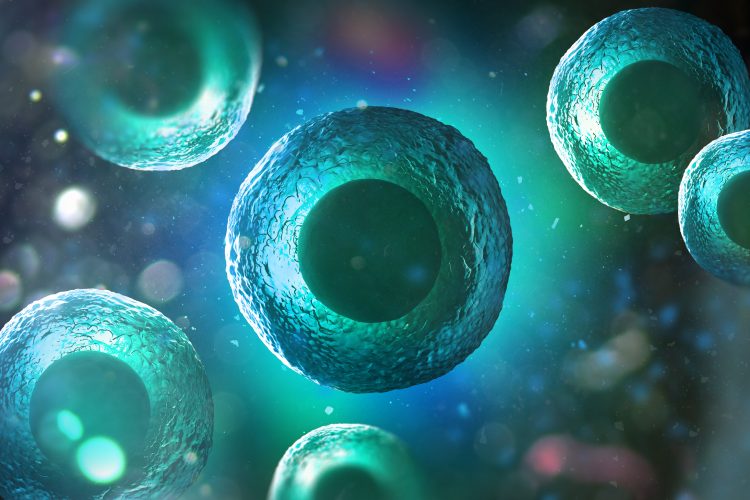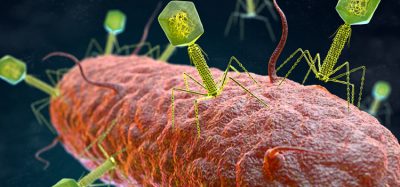Cellular senescence as a drug target
Posted: 27 October 2020 | Hannah Balfour (Drug Target Review) | No comments yet
New research reveals that age-related declines in cellular function and proliferation occur in multiple stages, accompanied by different inflammatory responses.


Cellular senescence, the decline in the function, growth and division of cells due to ageing, is believed to be involved in the onset of various age-related diseases. In a new study, researchers have uncovered four different stages of cell senescence, based on what inflammatory cytokines the cells are releasing. The team suggest that their findings could provide a new understanding of the aging and senescence process and contribute to the development of new therapeutics for age-related diseases.
Due to the expansion of the aging population it is becoming increasingly important that we have therapies to help maintain healthy life spans. According to researchers from Kumamoto University, Japan, cellular senescence, in which cells stop dividing and begin to secrete inflammatory mediators, is thought to be the cause of aging in the entire body. Premature senescence occurs when genomic DNA is damaged by stressors such as radiation, ultraviolet light or drugs, but its mechanisms are not yet fully understood. Senescence can also be a positive thing; in the instance of cancer, senescence can stop cells diving and prevent the development of malignancy. It is therefore important for medical science to try to understand and control it.
Although senescent cells lose their ability to proliferate, recent research has demonstrated that these cells secrete various proteins that promote chronic inflammation and cancer cell growth. This is called the senescence-associated secretory phenotype (SASP). Research has found that senescent cells accumulate in the bodies of aged mice and their removal may suppress whole-body aging, ie, if cellular senescence is controlled, it may become possible to regulate the aging process of the whole body.
Professor Mitsuyoshi Nakao’s research group at Kumamoto University is studying the mechanisms of cellular ageing from the viewpoint of epigenetics. To date, the researchers have screened a wide range of factors involved in the aging of human fibroblasts and found that SETD8 methyltransferase, NSD2 methyltransferase and other proteins play a role in preventing cellular senescence. To further understand the senescence process, the researchers reviewed cellular senescence over time and the characteristics of protein-secreting SASPs.
In their analysis they identified four phenotypic variations in cellular senescence:
- initiation (proliferation arrest)
- early (anti-inflammation)
- full (increased inflammation and metabolism); and
- late (decreased inflammation and metabolism).
They determined that these variations in cellular senescence could be controlled by changes in intracellular metabolism and epigenomics.
![There are at least four states of cellular senescence based on the characteristics of the senescence-associated secretory phenotype (SASP): (1) initiation (growth arrest), (2) early (anti-inflammatory), (3) full (increased inflammation and metabolism), and (4) late (decreased inflammation and metabolism). Coordination between intracellular metabolism and epigenomic remodeling shapes the phenotypic variation of cellular senescence [Credit: Professor Mitsuyoshi Nakao].](https://www.drugtargetreview.com/wp-content/uploads/Phenotypic-Variations-in-Cellular-Senescence.jpg)
![There are at least four states of cellular senescence based on the characteristics of the senescence-associated secretory phenotype (SASP): (1) initiation (growth arrest), (2) early (anti-inflammatory), (3) full (increased inflammation and metabolism), and (4) late (decreased inflammation and metabolism). Coordination between intracellular metabolism and epigenomic remodeling shapes the phenotypic variation of cellular senescence [Credit: Professor Mitsuyoshi Nakao].](https://www.drugtargetreview.com/wp-content/uploads/Phenotypic-Variations-in-Cellular-Senescence.jpg)
There are at least four states of cellular senescence based on the characteristics of the senescence-associated secretory phenotype (SASP): (1) initiation (growth arrest), (2) early (anti-inflammatory), (3) full (increased inflammation and metabolism), and (4) late (decreased inflammation and metabolism).
Coordination between intracellular metabolism and epigenomic remodeling shapes the phenotypic variation of cellular senescence [Credit: Professor Mitsuyoshi Nakao].
The team then focused on transcriptional and epigenomic factors that regulate the expression of genes that play important functions in the process of cellular senescence. They suggested that during the initiation state, genes that promote cell proliferation are suppressed, while genes that block proliferation (eg, the tumour suppressor proteins p53 and retinoblastoma [Rb]) are activated. In the early state, cell morphology changes significantly and cytokines with anti-inflammatory properties are activated.
In the full state the genes of pro-inflammatory cytokines become highly expressed and produce a strong inflammatory response, said the researchers. At the same time, the expression of metabolic genes (eg, those for mitochondria) and genes that synthesise proteins are increased via Rb. Finally, in the late state, the inflammatory response and metabolism decline, but interferon is produced and secreted in response to the cytoplasmic DNA fragments of the nuclear genome and mitochondrial DNA.
The researchers said that while their current study fails to identify the mechanisms and significance of these processes, it does show that different stages of cellular senescence result in qualitatively different inflammatory responses.
“We hope that our work will provide an opportunity for the scientific community to consider a new understanding of the mechanisms of cellular senescence and body ageing,” said Professor Nakao. “We believe that phenotypic variation in cellular senescence can lead to new methods to promote healthy longevity and the control and prevention of age-related diseases.”
The paper was published in Trends in Cell Biology.
Related topics
Cytokines, Disease Research, DNA, Epigenetics, Genomics, Proteomics
Related conditions
ageing, inflammation
Related organisations
Kumamoto University
Related people
Professor Mitsuyoshi Nakao







